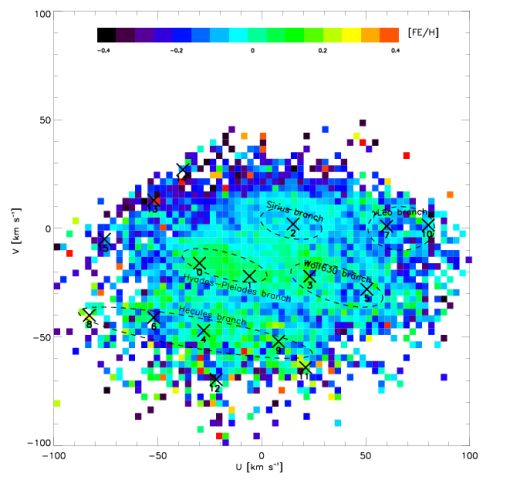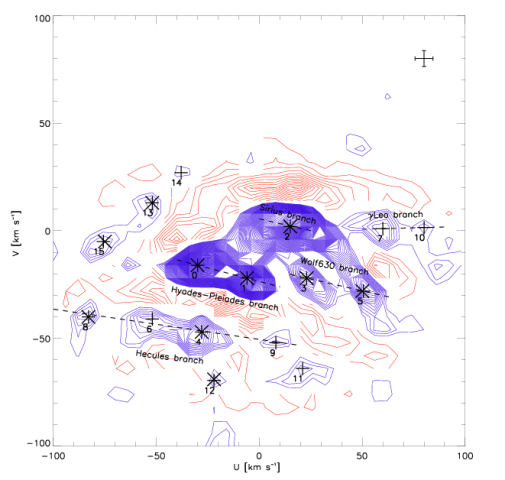Stellar stream, left by the galaxy's evolution history, plays an important role in the study of the formation mechanism of the Milky Way. Dr. Liang Xilong, Prof. Zhao Jingkun and Prof. Zhao Gang et al found four new stellar stream candidates in the solar neighborhood with LAMOST DR3 combined with the Gaia TGAS.
Stellar stream refers to a group of stars with common kinematics characteristics. They have common properties in parameter space (such as velocity and abundance), in stark contrast to background stars. There are two main origins of stellar streams. Some streams are dynamical streams induced by the asymmetrical part of the gravitational potential of the galaxy (such as the bar or spiral arms). Other streams are the debris of the tides, induced by large galaxy's accretion of its satellite galaxy, or stars pulled out of its original orbit from star clusters that have been disintegrated by tidal forces. The star stream is one of the best evidences left by these events. Through the study of the streams from the accretion events, we can understand the merging history of the Milky Way. And through the dynamical streams we can restrict the values of parameters of the galaxy’s nonaxisymmetry gravitational potential.
Liang Xilong and Zhao Jingkun et al selected a local subsample of 26691 stars from the LAMOST DR3 and Gaia DR1 TGAS homologous star samples. They used wavelet transform technique in the velocity space and found 17 stellar streams, 4 of which are newfound candidates. They analysed the metallicity distribution of the local subsample and confirmed that there is a gap in the metallicity space corresponding to that in the velocity space. This finding supports that the Hercules stream is a dynamical stream induced by the resonance of the bar. They also speculated on the origin of other stream candidates based on metallicity information. At present, many velocity structure of the solar adjacent domain is still an open question. More detailed information about the abundance of elements is needed to determine the origin of the star stream. Only after then, can we reveal what happened in the galactic history.
A subsequent study on the origins of stellar streams are going on. They have submitted observation application of high resolution spectra to Subaru Telescope. The result of Stellar stream candidates in the solar neighborhood with LAMOST DR3 and TGAS has been published in the Astrophysical Journal (APJ).



Address: 20A Datun Road, Chaoyang District, Beijing, China code: 100012
Tel: 010-64888708 E-mail: naoc@nao.cas.cn

